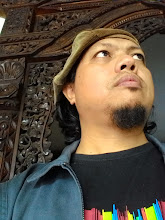LUNTARSUG: A LOST ANCIENT SULU WRITING SYSTEM!
LUNTARSUG: A LOST ANCIENT SULU WRITING SYSTEM!
Neldy Jolo
Pre-Spanish Philippines has said to be known of having the ancient writing system known as Baybayin. It was noted by a Spanish priest Pedro Chirino in his “Relación de las islas Filipinas” in 1604 and Antonio de Morga in 1609.
There was no mention of specific place where Baybayin was discovered. Spanish called Baybayin as “Tagalog letters” while Bikolano called it “Basahan”. To the Tausug, Basahan or Bassahan means a “place to read, a manner of reading or will be reading” from the word “Bassa” meaning “to read”.
Baybayin was used generally to write personal writings; poetry and diary. William Henry Scott argued that there was no literacy was first achieved and no historical record of the writing system itself because some Datu from 1590’s could not sign affidavits and oaths in 1620’s.
Ferdinand Magellan’s chronicler Antonio Pigafetta wrote that Visayans were not literate in 1521, but Miguel Lopez de Legazpi reported that Visayans have letter and characters learned from Malay.
This was supported by Francisco Alcina, a century later that Visayans learned it from Tagalog and Tagalog learned it from Bornean known to them as “Moro Writing”. Baybayin was perhaps learned from Sulus or Tausug because Sulu was in the height of its civicultural influences as well as politico-economic power in 1500’s.
At least five theories about the origins of Baybayin, such as: Kawi Script from Java, Pallava Script from Sumatra, Lontara Script from Sulawesi, Assamese Script from Bengal and Cham Script from Champa. These theories were coming from scholars David Diringer, Fletcher Gardner and Isaac Taylor.
Baybayin means “spelling” that comes from the Tagalog word “baybay” which means “to spell”. Baybay in the Visayan language could mean “beach”. Baybayin as a writing system had invited many scholars to research on.
Dean Paul Rodriguez Versoza of the University of Manila changed Baybayin into Alibata in 1914 when he gave lectures in 1921 and explained it in his writing “Pangbansang Titik nang Pilipinas” in 1939. He coined Alibata from the first three letters of Arabic characters; Alif, Ba, Ta’ where it widely known in Mindanao and Sulu Archipelago.
Some historians do not agree with Dean Versoza, especially Paul Morrow because his claimed of Alibata has no indication of ancient writing system in the archipelago; it is totally a modern creation and absolutely has no relationship to Baybayin.
Father Francisco Lopez introduced “Doctrina Cristiana” in Ilocano published in 1621 using the Tagalog form of Baybayin to preach Christianity to the natives. Despite of extensive usage of Spanish priest for evangelization in 1500’s, Baybayin was started to get abandon in the late 1600’s and later disappeared.
Tausug historian, Samuel K. Tan wrote that the first written literature of Sulus or Tausug was called Luntar. It was known as ancient writing of the Tausug aside from Sulat or Surat Sug. Sulat Sug is of Arabic characters that use to write in Bahasa Sug or known as Jawi in Malay world. Luntar was believed to be an individual and personal historical accounts and biographies.

The Luntar was perhaps practiced before the widespread advent of Islam begun in 7th or 9th century to Sulu Archipelago. Luntar was perhaps lost and burned during the first burning of Jolo by the Spanish armada in 16th century.
Spanish destroyed the Tausug writings perhaps to bury the ancient Tausug symbol of civilization. The Spanish might dispirited for not winning the battle with Tausug in their coercive attacks.
Luntar means “tossing words from mouth”. Paul Morrow wrote that pre-Hispanic writing tools were called panulat. Panulat is a Tausug word which means “writer” and “hipanulat” means “tool uses to write” from the word Sulat which means “to write and letter.”
Since the theories of the origin of Baybayin was from Kawi of Java, Pallava of Sumatra, Lontara of Sulawesi, Assamese of Bengal and Cham of Champa and the Tagalog and then Visayans learned the Baybayin from Bornean, it seems that scholars are inconsistent about their discovery of the Baybayin where it was derived and learned from.
These five theories of the origin of Baybayin don’t agree with the place where it was learned by Tagalog and then Visayans.
If Baybayin was learned by Visayans from Tagalog then Tagalog learned it from Bornean, therefore the lost original script for this Baybayin was from Sulu Archipelago and Borneo known as Luntar.
Some Bornean in the early century are also known as Sulus, Sulug, Suluk, Tausug or people of Sulu Archipelago and Borneo. This was during the pre-Spanish invasion in 15th century.
Upon the analysis to the assumptions of historians regarding the origin of Baybayin and/or Alibata that seems contracting to each other, I and Asree Sug developed the Baybayin and/or Alibata into a new writing to name it LUNTARSUG.
We have added few characters to Baybayin and/or Alibata to suit with the modern spelling of words according to the English alphabet and named the font and its system as “ASREENELDY”. Those characters are; ja, za, ra, fa, patay and sangka’.
It would be published later as part of the book “Sejarah Sulug dan Teori Likusantara: Kepulauan Sulu sebelum muncul nama Philippines” or Sulug History and Likusantara Theory: Sulu Archipelago before named Philippines exist.
In this book the pre-Spanish Philippines was known as part of the Sulu Archipelago.
Source: http://theislandsofpearls.blogspot.com
|




































































cerita yang menarik.....tapi adakah benar PATI yang ditangkap diseksa dalam kurungan?????
penulis menulis berdasar kan apa????
cerita dari mulut ke mulut????
atau penulis sendiri pernah mengalaminya????
PATI yang tidak mempunyai dokumen perjalanan semestinya di tangkap oleh imegresen....adakah penulis beranggapan SABAH itu satu daripada kesultanan sulu jadi setiap suluk(????)bebas masuk dan keluar dari SABAH...
alangkah dangkal pemikiran penulis...
SABAH SEBAHAGIAN DARIPADA MALAYSIA...
XPAYAH LAH MAINKAN ISU kesultanan sulu...DAH LAPOK ISU TU...
TU BELUM LAGI isu sultan2 sulu yang terlampau banyak sangat mengaku sebagai pewaris takhta yang sah...
selesaikan dahulu hal kesultanan sulu...
apa pun PATI yang masuk tetap akan dihukum sesuai dengan undang2...